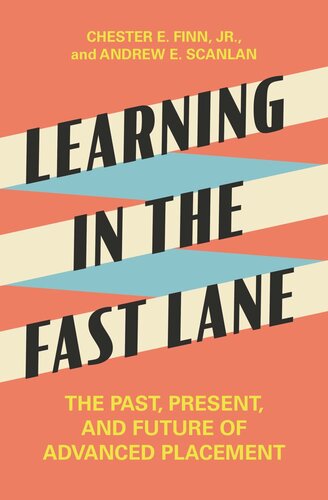

Most ebook files are in PDF format, so you can easily read them using various software such as Foxit Reader or directly on the Google Chrome browser.
Some ebook files are released by publishers in other formats such as .awz, .mobi, .epub, .fb2, etc. You may need to install specific software to read these formats on mobile/PC, such as Calibre.
Please read the tutorial at this link: https://ebookbell.com/faq
We offer FREE conversion to the popular formats you request; however, this may take some time. Therefore, right after payment, please email us, and we will try to provide the service as quickly as possible.
For some exceptional file formats or broken links (if any), please refrain from opening any disputes. Instead, email us first, and we will try to assist within a maximum of 6 hours.
EbookBell Team

4.3
18 reviewsThis pathbreaking biography of the Advanced Placement program tracks its evolution from an obscure benefit for privileged kids into America’s foremost source of rigorous, college-level academics for millions of high-school students, its emergence as an opportunity booster for disadvantaged youngsters, and the multiple challenges it now faces.
The first book to tell the story of the Advanced Placement program, the gold standard for academic rigor in American high schools
The Advanced Placement program stands as the foremost source of college-level academics for millions of high school students in the United States and beyond. More than 22,000 schools now participate in it, across nearly forty subjects, from Latin and art to calculus and computer science. Yet remarkably little has been known about how this nongovernmental program became one of the greatest success stories in K–12 education—until now. In Learning in the Fast Lane, Chester Finn and Andrew Scanlan, two of the country's most respected education analysts, offer a groundbreaking account of one of the most important educational initiatives of our time.
Learning in the Fast Lane traces the story of AP from its mid-twentieth-century origins as a niche benefit for privileged students to its emergence as a springboard to college for high schoolers nationwide, including hundreds of thousands of disadvantaged youth. Today, AP not only opens new intellectual horizons for smart teenagers, but also strengthens school ratings, attracts topflight teachers, and draws support from philanthropists, reformers, and policymakers. At the same time, it faces numerous challenges, including rival programs, curriculum wars, charges of elitism, the misgivings of influential universities, and the difficulty of infusing rigor into schools that lack it. In today's polarized climate, can AP maintain its lofty standards and surmount the problems that have sunk so many other bold education ventures?
Richly documented and thoroughly accessible, Learning in the Fast Lane is a must-read for anyone with a stake in the American school system.